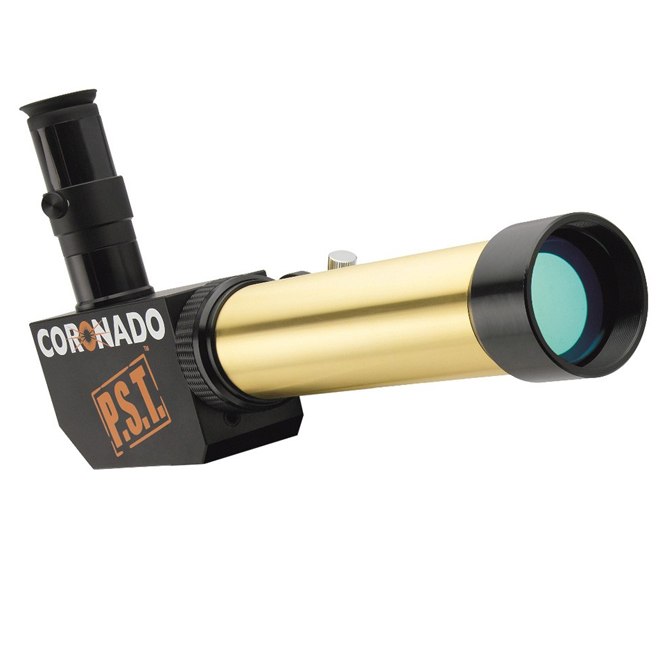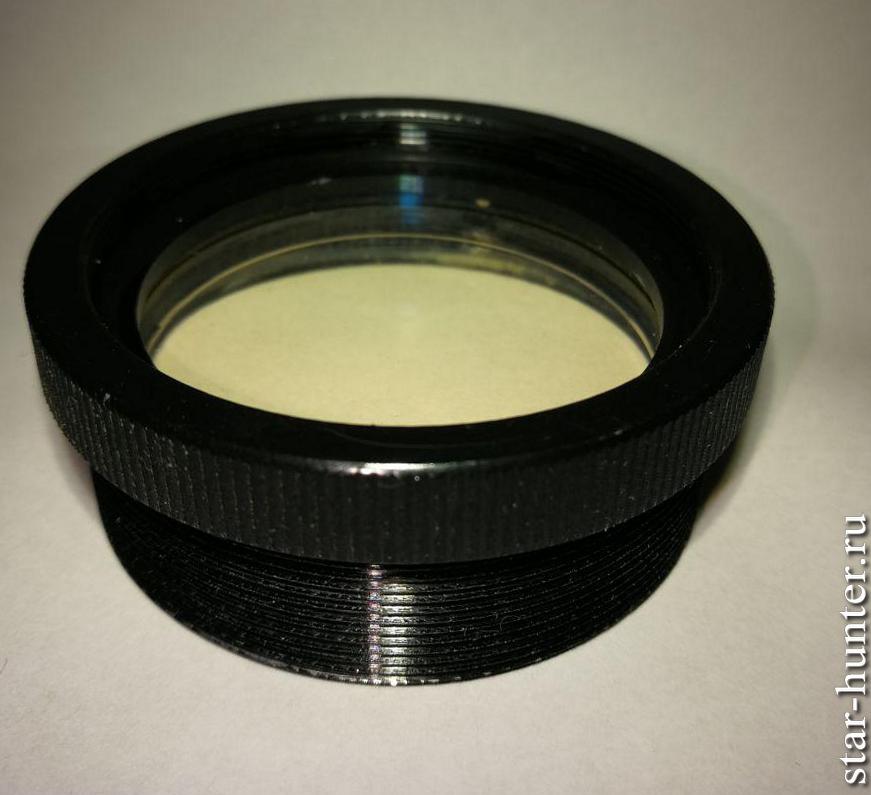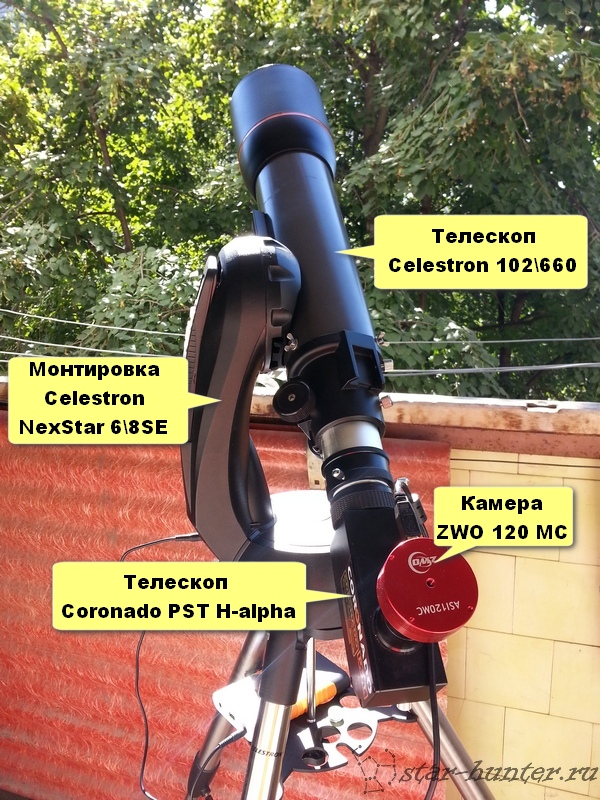
WARNING: ALL MANIPULATIONS WITH A CHROMOSPHERE TELESCOPE TO BE CARRIED OUT AT YOUR OWN RISK – NO CONFIRMATION FOR HEALTH SAFETY!

Coronado is a sophisticated optical device containing the following parts:
– Objective lens (achromat 40 mm, focal length 400 mm)
-scattering flat-concave lens with a diameter of 20 mm, focal length -200 mm, converts the beam into a parallel, for the correct operation of the etalon
– etalon Fabry–Pérot (several glass plates, diameter 20 mm). Filters light in the form of a series of humps and allows you to change the bandwidth
– a collecting plane-convex lens (diameter 20 mm, focal length 200 mm), converts a parallel beam into a convergent
– pentaprism (necessary for focusing and additional light filtering)
-red interference light filter, diameter 15 mm
-band-band blocking interference narrowband filter, diameter 5 mm.
At the output we get a disk of the Sun measuring 4 millimeters. The image is further viewed through the eyepiece.
Celestron 102 SLT (optical tube only) —achromat refractor, diameter 102mm, focal length 660mm, simple two-inch rack focuser. The telescope is not very suitable for observing the planets because of the rather high level of chromatism. For observations of bright clusters, galaxies, nebulae, it is quite suitable. This telescope was purchased for docking with the Coronado PST chromospheric telescope, which was discussed above. An additional lens-gomal is purchased, which is a negative douplet with a focal length of -300mm. The docking scheme: telescope lens> Gomal> Coronado. The lens of the telescope + gomal act as the simplest telescope of the Galilean system – a parallel beam of light enters and a parallel beam also emerges (into the Coronado lens).

The procedure for docking two telescopes:
1) unscrew the bolts on the focuser, remove the focuser, if there is inside the diaphragm – knock them out with a screwdriver.
2) unscrew the Coronado lens, insert the golden tube into the removed focuser. We insert the tube completely and fasten the Coronado lens and Gomal lens. I recommend pre-winding a single sheet of A4 paper to the golden tube – so that it does not scratch, well, and not dangle.
3) fasten the entire structure back to the refractor tube.
Done. A feature of the Celestron 102 SLT refractor is that the length of the focuser tube is almost equal to the length of the golden Coronado tube, so it does not need to be trim – it is enough to knock out the diaphragm. Modification another refractor under the Coronado (Sky-Watcher SK1201, D = 120mm, f = 1000mm) with a similar focuser, I had to trim the focuser tube a little, since she was too long. An important advantage is also the possibility of shooting the solar disk entirely in the main focus of the SLR camera – there is enough removal of the focus point. Since the gomal lens is designed for a relative aperture of 1: 7.5, and for a Celestron 102 SLT the relative aperture is 1: 6.6, a part of the light beam is inevitably cut off by the gomal lens itself. The telescope aperture is additionally fixed to 88mm to reduce the thermal load on the gomal and the Coronado lens. When shooting with a Barlow lens, the entire aperture (88mm) works, and when shooting in the main focus, there is an additional small aperture due to the need to bring the gomal closer to the refractor lens for focusing.

Coronado PST H-alpha 40 mm.
For visual observations of the Sun through the Coronado telescope, I recommend using an IR-UV cut ocular blocking filter.

http://www.astrobin.com/users/The_Last_Man/?public=&sub=gear&active=21729


